
TARGET 150826
The Hanging Temple
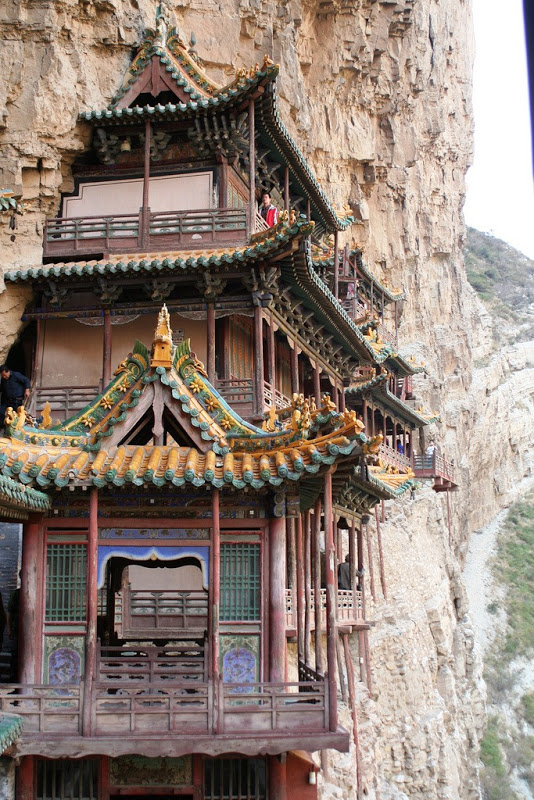
According to legend, one day back in the late Northern Wei Dynasty (386-534 AD) in China, a lone monk named Liao Ran climbed up a sloping ledge on the face of a cliff and started building a temple there.
As the years progressed, other monks began adding to the temple, shoring it up with rock embankments and long poles to make sure it didn't fall. Over the following 1,500 years, it was used by three religions, Confucianism, Taoism and Buddhism, and slowly fell into ill repair. In 1990, it was restored, and has today become one of the most popular places for people to visit.
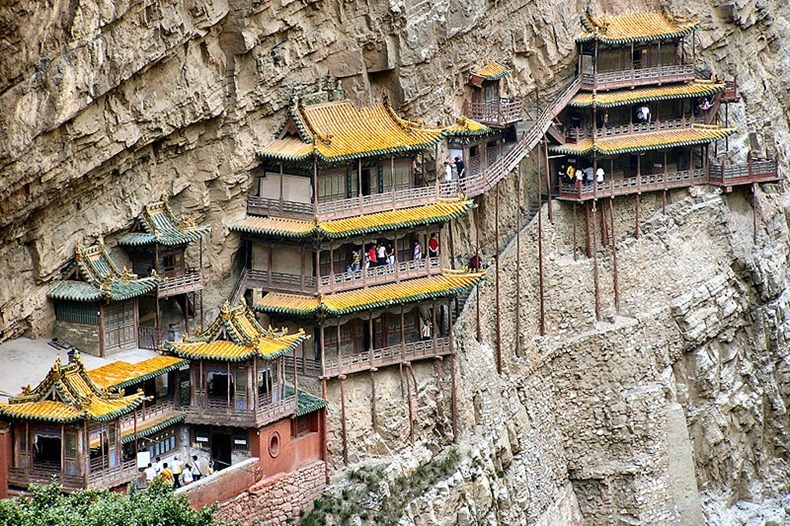
The temple is known as one of the world's forgotten wonders. Clinging to a cliff of the Hengshan mountain, in apparent defiance of gravity, it consists of 40 rooms linked by a dizzying maze of passageways.
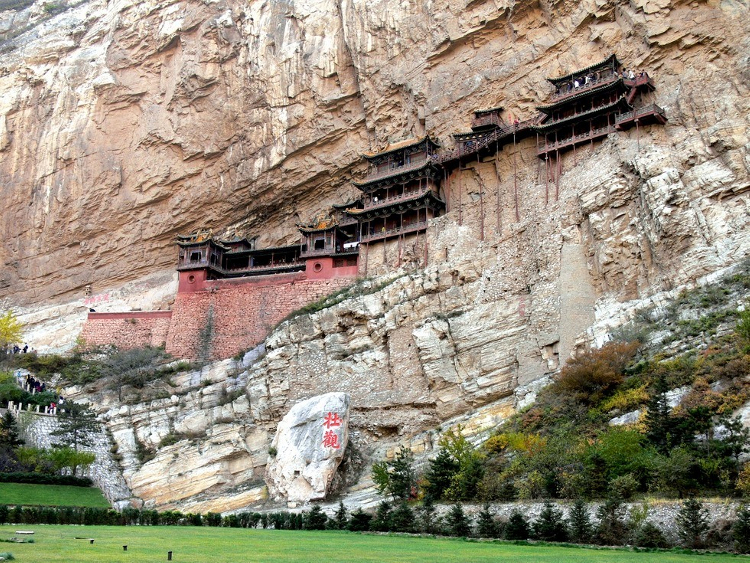
The Hanging Temple, also called Hanging Monastery or Xuankong Temple (pinyin: "Xuánkong Sì") is 75 m or 246 ft above the ground.
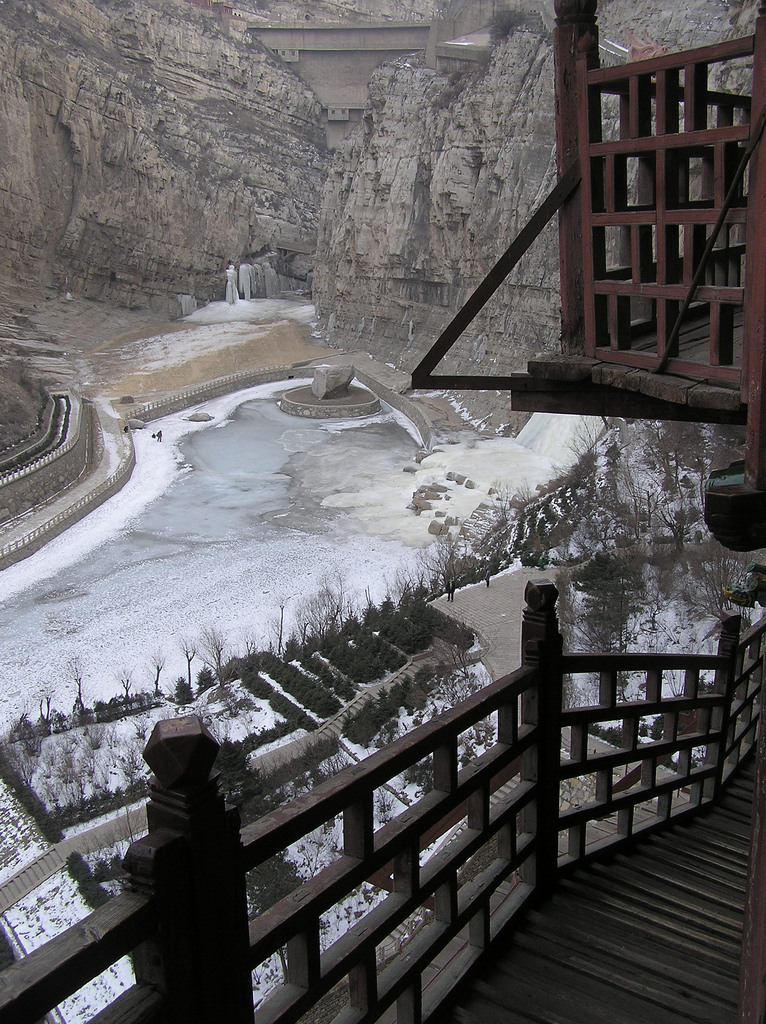
It looks out into a deep river gorge, down river from a modern dam (see top of picture, above). The river freezes in the Winter. The temperature falls so low that even the waterfalls freeze in place (see picture above). But the water level is low enough to allow an access road to the temple during most of the year.
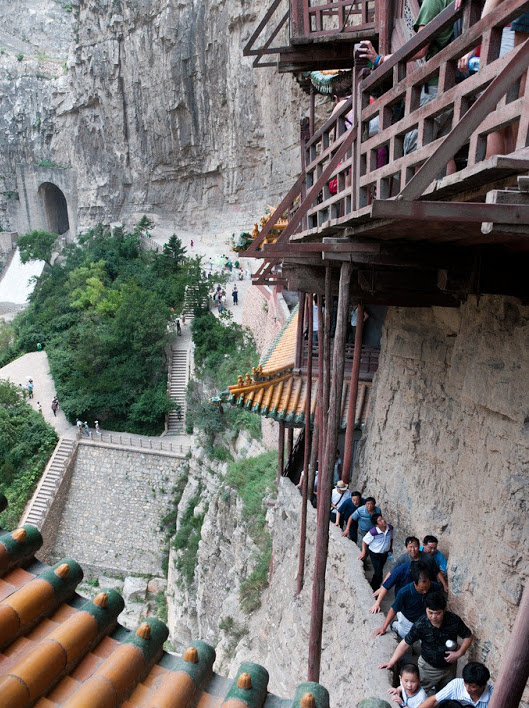
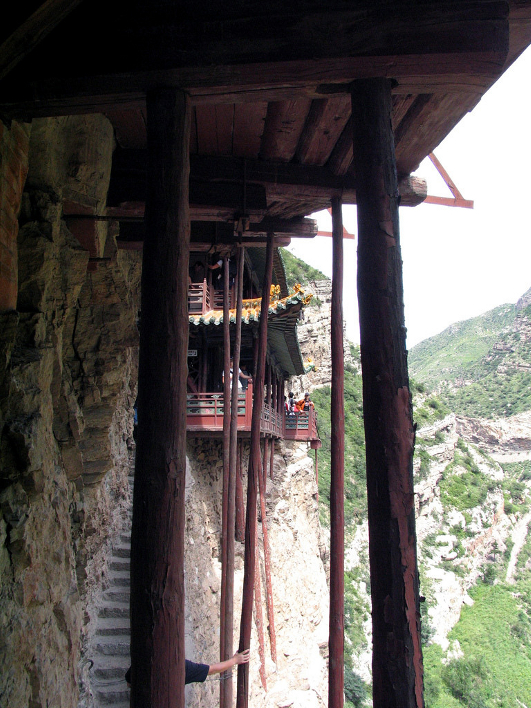
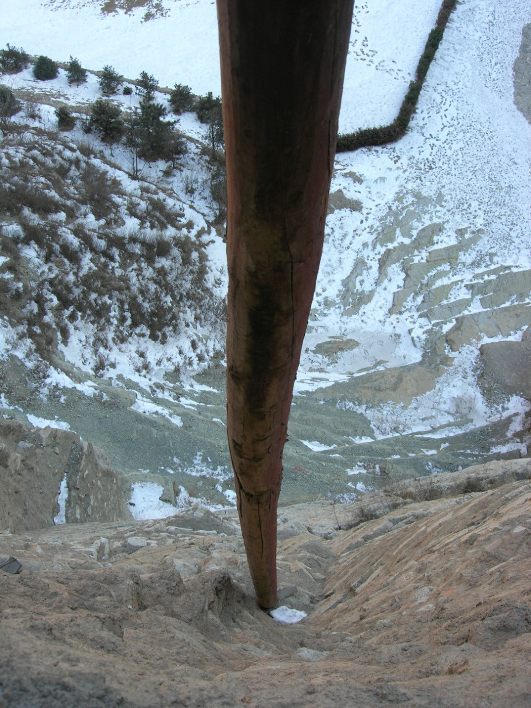
In order to build the temple, the monks had to pile up stones to make places on the cliffside to support the buildings. But only so much stone material could be added before it became too unstable to hold even its own weight. Therefore, poles in the form of tall tree trunks had to be brought in to support the outer edges of the temple buildings. The rock ledges also provided a way to have walking spaces between the structures.
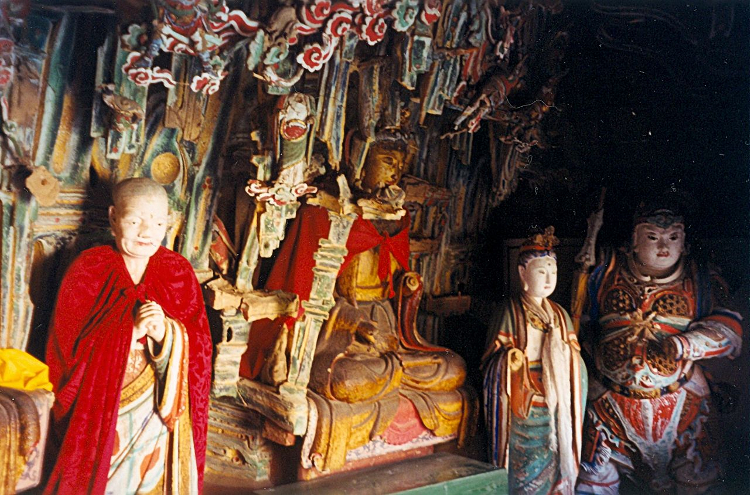
Over 40 halls, cabinets and pavilions within an area of 152.5 square meters are connected each other by corridors, bridges and boardwalks. They are evenly distributed and well balanced in height. Inside the temple are more than 80 bronze cast statues, iron cast statues, and clay sculptured statues and stone carvings banded down from different dynasties.
This temple is notable not only for its location on a sheer precipice but also because it includes Buddhist, Taoist, and Confucian elements.FEEDBACK MAP
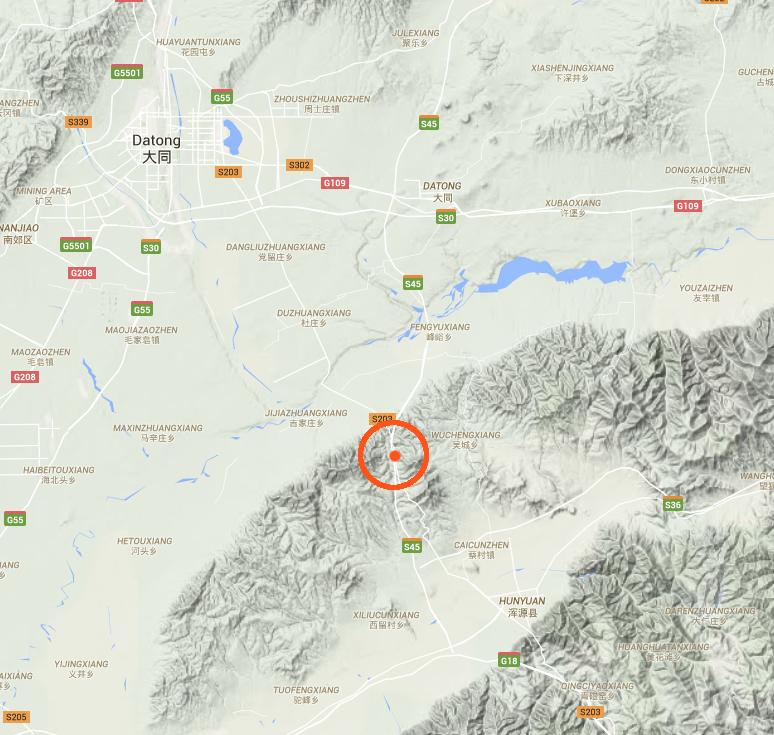
It is located in Hunyuan County, Shanxi province, China. The closest city is Datong, 64.23 kilometers (39.9 miles) to the northwest.
If you got impressions for which this feedback is insufficient, more information,
pictures and videos can be found at the following web sites:
Atlas Obscura
Wikipedia
Amusing Planet
10 minute video with very detailed information
The Daily Mail
ChinaCulture.com - The history of the temple
The Temple Trail - excellent source for further information
Many thanks to Teresa Frish for slelecting this target for the Wednesday night free webinars she holds on a monthly basis. We at PSI use the targets she selects on this day so viewers will not wind up getting two different targets with the same set of coordinates. You can sign up for these free webinars at her web page under the option, "Online Classes & Discussions". Videos of all of Teresa's webinars are available on YouTube